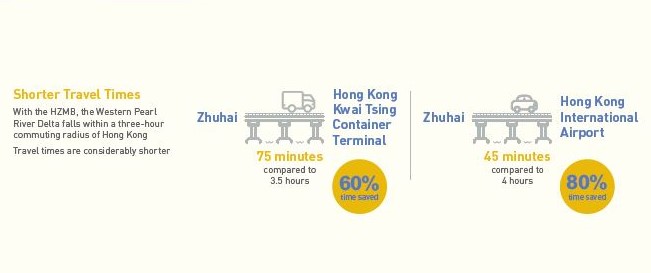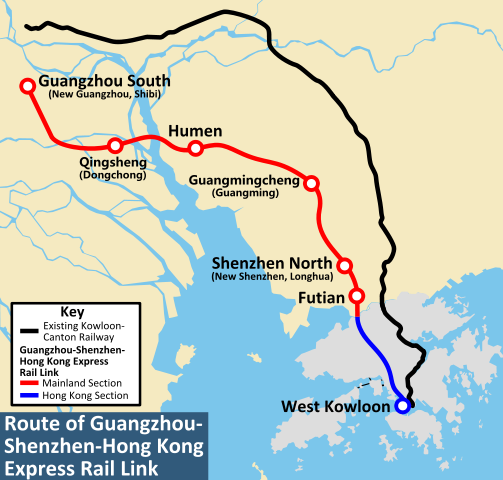There is a well-known Chinese saying – “Wanna be rich? Build roads first!”
要想富 先修路 and Hong Kong is no stranger when it comes to investing in infrastructure.
Hong Kong, renowned as ‘the Pearl of the East’, is a beautiful and modern megapolis with a combination of skyscrapers, beaches, historical landmarks, and heritage buildings in a compact space.
Author: Angie Chai, Driver Trett Senior Consultant, Hong Kong
As an ex-British colony, Hong Kong’s culture has been deeply influenced by the West. As a result, a mixture of East meets West culture has emerged and made Hong Kong a unique and distinctive society that has an international perception, attracting people from all over the world for business, work, travel, and education. Hong Kong is one of the world’s most active financial centres having developed from a small fishing village in the 19th century. The fast-moving growth in population it has experienced since then has required Hong Kong to quickly adapt its infrastructure, and in July 2017 the governments of Guangdong, Hong Kong and Macau signed the ‘Framework Agreement on Deepening Guangdong-Hong Kong-Macau Cooperation in the Development of the Greater Bay Area’.
There are seven areas of development (https://www.bayarea.gov.hk/en/outline/plan.html):
- Developing an international innovation and technology hub.
- Expediting infrastructural connectivity.
- Building a globally competitive modern industrial system.
- Taking forward ecological conservation.
- Developing a quality living circle for living, working, and travelling.
- Strengthen cooperation and jointly participating in the Belt and Road Initiative
- Jointly developing Guangdong-Hong Kong-Macau cooperation platforms.
Two of the recent Greater Bay Area mega infrastructure projects in Hong Kong include the Hong Kong-Zhuhai-Macau Bridge (HZMB) and the Guangzhou–Shenzhen–Hong Kong Express Rail Link (XRL), both projects were completed in 2018.
HONG KONG-ZHUHAI-MACAU BRIDGE (HZMB)
The 55km bridge connects Hong Kong, Zhuhai and Macau comprising a 12km Hong Kong Link Road, 29.6km Main Bridge (with 22.9 km above the sea and 6.7 km undersea) and 13.4km Zhuhai Link Road (Fig. 1.):

HZMB is the world’s longest sea crossing bridge. It took nine years to complete the construction of the whole project and was originally set to finish by the end of 2016 (https://www.thestandard.com.hk/section-news/section/11/173208/Bridge-toopen-in-one-go-despite-HK-delays). However, the HZMB officially opened to the public on 24 October 2018 (https://www.scmp.com/video/china/2169817/chinese-president-xi-jinpingdeclares-hong-kong-zhuhai-macau-bridge-open). HZMB is designed to have a 120-year life span and it cost a staggering RMB126.9 Billion (approximately US$18.3 Billion). It has a six-lane carriageway with three lanes each side.
HZMB significantly reduces the travel time between Hong Kong and Zhuhai:

HZMB was an extremely complex project that faced numerous challenges and difficulties during construction. The steel bridge deck at the main bridge (Figure 3) used a total of 420,000 tons of steel (the equivalent of 60 Eiffel Towers) and the bridge deck area is 700,000-metres square (the equivalent of 98 football pitches) https://www.hzmb.gov.hk/tc/project/main-bridge.html. As the main bridge was constructed in open sea, most of the bridge structures were precast and prefabricated off-site and delivered to site for erection using an integral erection method (https://www.hzmb.gov.hk/tc/project/main-bridge.html).
 Another challenge was the construction of the tunnel works at the Hong Kong link road section as the box jacking operation was executed underneath the Airport Express Line (AEL). This involved excavation works and casting tunnel box segments in a deep and narrow shaft. The works were completed with a high degree of precision using a computerised system to synchronise the movements of the hydraulic jacks (https://www.hzmb.gov.hk/tc/project/hk-link-road.html).
Another challenge was the construction of the tunnel works at the Hong Kong link road section as the box jacking operation was executed underneath the Airport Express Line (AEL). This involved excavation works and casting tunnel box segments in a deep and narrow shaft. The works were completed with a high degree of precision using a computerised system to synchronise the movements of the hydraulic jacks (https://www.hzmb.gov.hk/tc/project/hk-link-road.html).
The mega link has been described as a “blood and sweat project” by many people in the building sector.
GUANGZHOU - SHENZHEN - HONG KONG EXPRESS RAIL LINK (XRL)
Guangzhou - Shenzhen - Hong Kong Express Rail Link (XRL) is an express rail (total length of 140km) that connects Hong Kong (West Kowloon) to Guangzhou (Shibi) via Futian and Longhua in Shenzhen and Humen in Dongguan.
The Hong Kong section of the XRL is a 26km underground rail-run from the terminus in West Kowloon Station (WKT) to the boundary at Huanggang (https://www.thb.gov.hk/eng/policy/transport/issues/cbt_4.htm) (Figure 4). XRL is operated by the MTR Corporation (MTR Corporation Limited is a majority state-owned Hong Kong company) and train speeds can reach 200km/h in the Hong Kong section and up to a maximum of 350km/h in the Mainland section.
The construction works commenced in 2010 and were completed in 2018, a three-year delay from the original completion date (4 August 2015). The official opening of the XRL to the public was on 23 September 2018. The construction work for the Hong Kong section was divided into 20 major civil contracts and awarded to 17 contractors (https://www.info.gov.hk/gia/general/201405/28/P201405280337.htm) due to the complexity of the construction works. However, this type of contract arrangement involved a high degree of interfacing and coordination between the parties.
 One of the major setbacks on this project was the difficulty encountered at the WKT and the cross-boundary tunnelling works which were subject to unexpected construction conditions and a shortage of labour.
One of the major setbacks on this project was the difficulty encountered at the WKT and the cross-boundary tunnelling works which were subject to unexpected construction conditions and a shortage of labour.
The completion of the XRL has significantly reduced the travel time between Hong Kong and major Chinese cities. For example, it takes 14 minutes from WKT to Futian (previously circa 100 minutes via numerous forms of transportation). As of today, people can easily travel to 58 Mainland Chinese stations from Hong Kong (https://www.highspeed.mtr.com.hk/en/about/hsr-intro.html).
Overall, the Greater Bay Area development initiative will benefit the Chinese economy and boost internationalisation, both an important part of the next stage in China’s economic growth.
So, to conclude with another well-known Chinese saying
一只蜂酿不成蜜 一颗米熬不成粥.
‘It requires a joint effort to achieve anything worthwhile’.
List of figures, in order of appearance:
Figures 1 - 3, taken from the hzmb.gov website, found at: www.hzmb.gov.hk/en/info/sea%20crossing-EN.pdf
Figure 4, extracted from www.wikipedia.org/wiki/Guangzhou–Shenzhen–Hong_Kong_Express_Rail_Link
This article was originally written for issue 21 of the Driver Trett Digest.
To view the feature, click here.